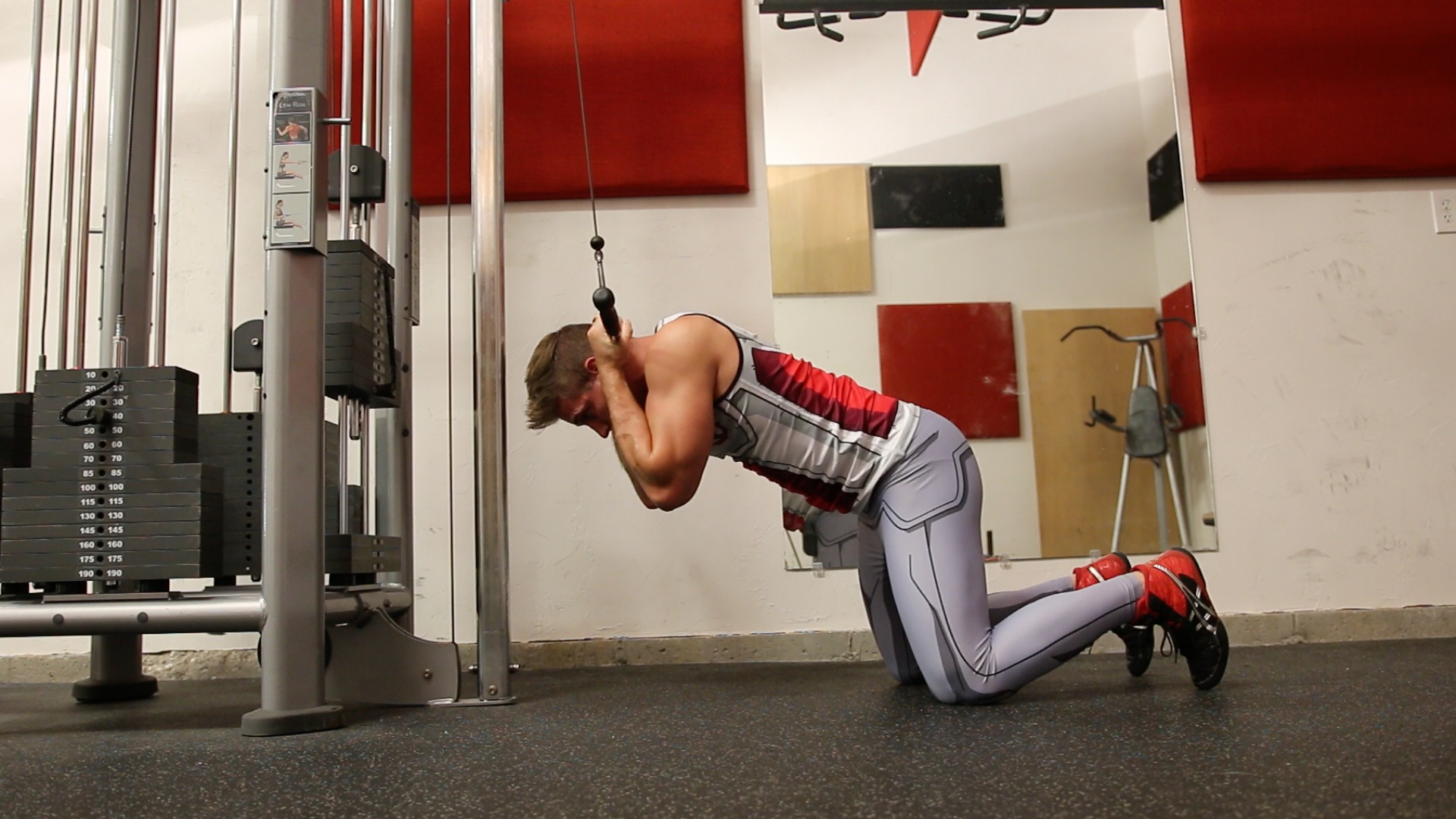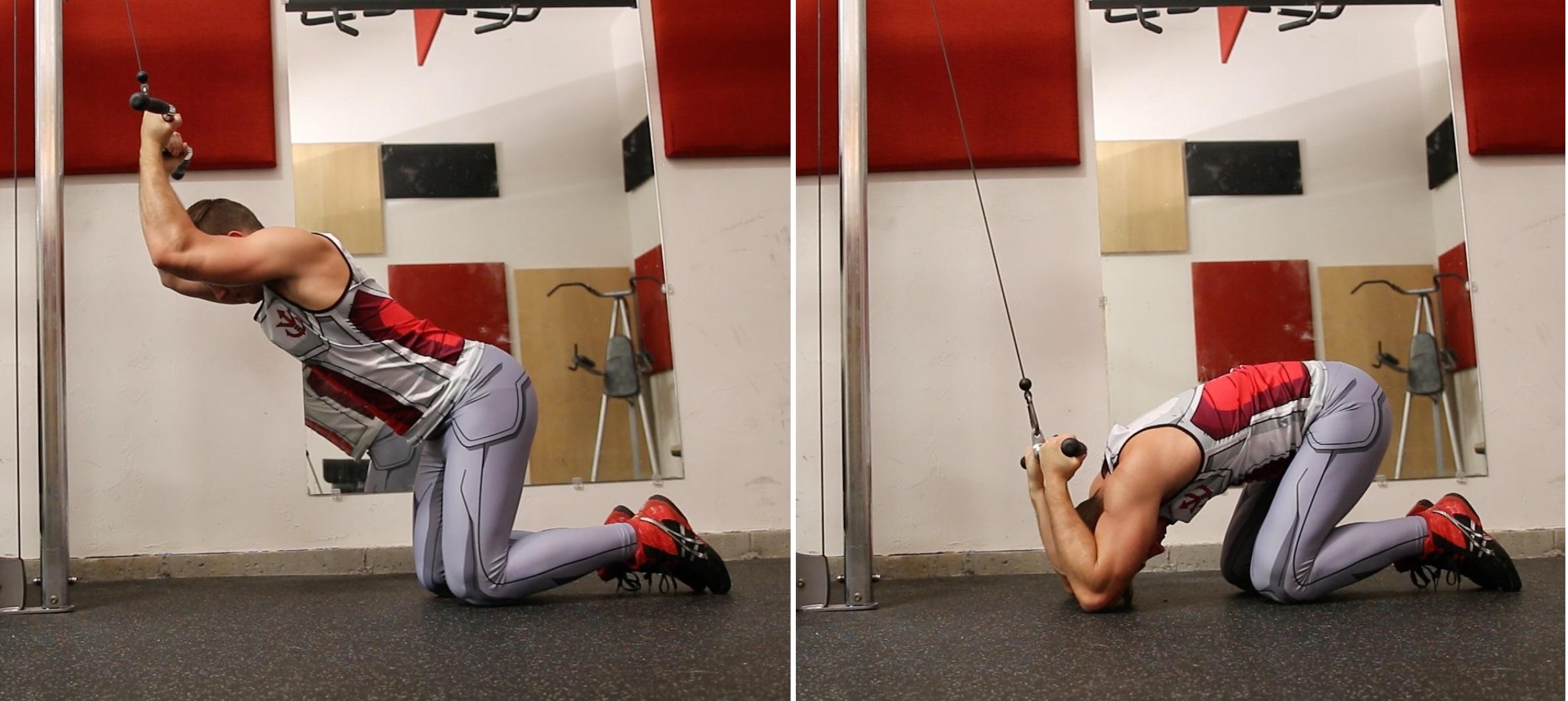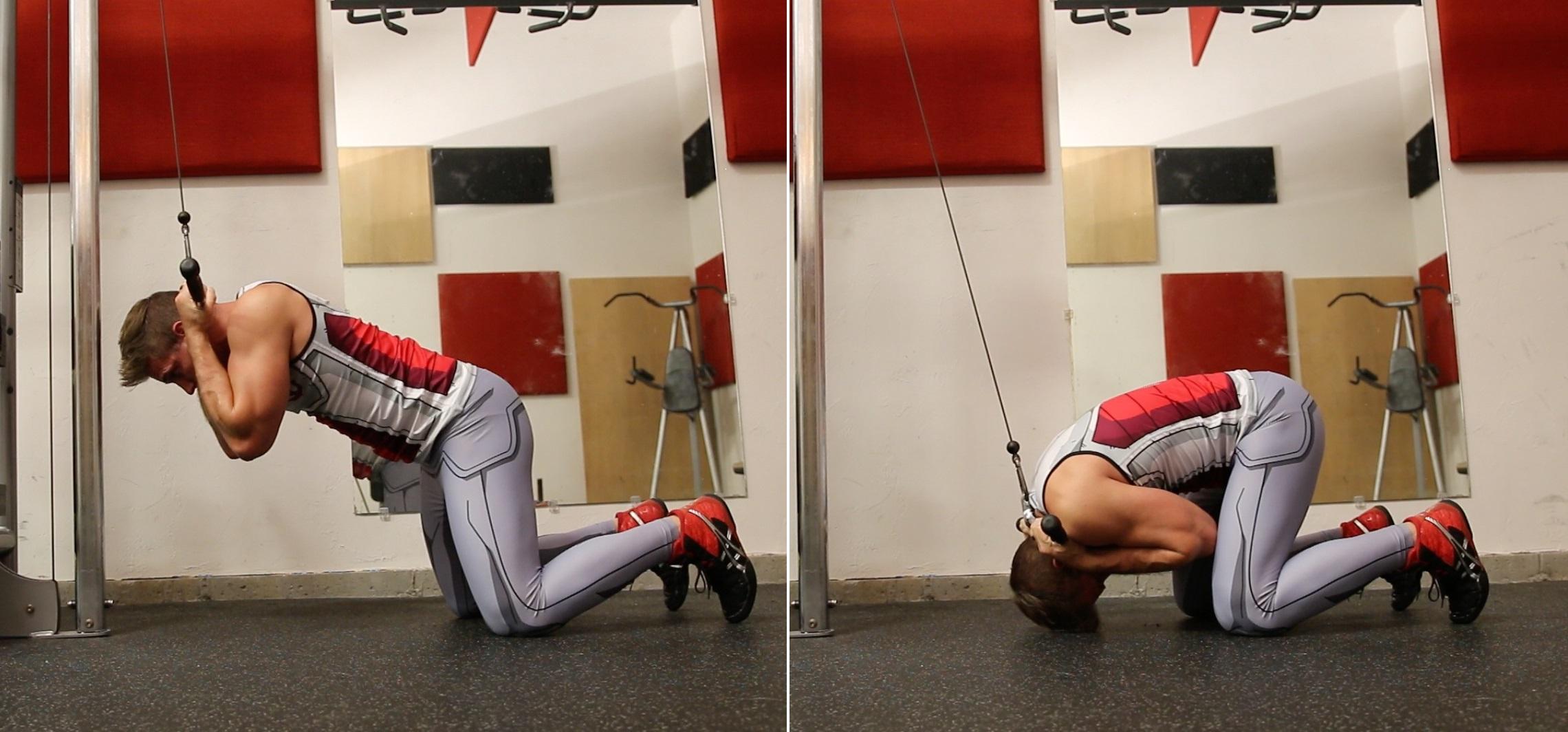4 Dumbest AB Pulldown Mistakes Sabotaging Your ABS!
Stop Doing These!
Today we are going to be going over the 4 dumbest mistakes on my ABsolute favorite abdominal exercise for building thick and blocky abs, and that is the AB PULLDOWN!
Mistake #1: Not Properly Adjusting The Height Of The Pulley
This first mistake occurs before you even start the movement. This can be a problem in two different ways. Number one, if you have the pulley too high, depending on the cable machine that you’re working on, it’s very possible for the weight stack to smash into the top of the machine halfway through the movement. It happened to me, I’m sure it’s happened to some of you, it makes a really loud noise, you look kind of ridiculous and you can’t get a full crunch.
The opposite holds true as well. If you go too low, even a little bit too low, it really starts to change the motion of the movement and how the weight is pulling on your torso. Remember, the entire point of this exercise is you want to overload your abs as much as possible. So, if you have the pulley even a little bit too low, in order to get a proper crunch in, you have to start moving farther and farther away from the pulley itself, which is going to change how you hold the bar, and how you do the crunch. You’ll still get a crunch in your abs, you’ll still be able to come all the way down, but you’ll quickly notice that you won’t be able to lift as much weight, and that defeats the purpose of the exercise.
The proper placement for the pulley is to actually bring it to about the same height as your head, or slightly above the height of your head. You want to be able to get almost directly underneath the pulley because that’s going to place you in the strongest position to lift the most amount of weight. To get into position, go onto your knees and hold the attachment behind your head. Once in place, with the pulley at the correct height, you’re able to come all the way down, then all the way back up to get a full contraction and really overload those abs.

Mistake #2: Holding The Bar Incorrectly
When you perform this movement, the way you want to hold the bar is directly behind your head, and having it rest across your neck. I see a lot of people in my gym when they do this movement is when they get into position, they hold their arms out in front of them instead of behind their head. As soon as you start to hold the bar out in front of you, you’ll instantly start to feel your biceps, shoulders and lats getting engaged. Also, because of the angle, you’re going to have to grip the bar much harder, causing forearm fatigue.
So you’re basically getting upper body fatigue before you even get in place to do your first repetition. The second issue with your arms out in front of you is that you’re not going to be able to get a full crunch at the bottom of the movement. What’s going to happen is that as you come down, your elbows are going to hit the ground before you’re able to come all the way in. You might think that’s full range of motion (ROM), but you actually need to come all the way in so that your elbows touch your knees. Having your arms out will cause unnecessary upper body fatigue and force your elbows to stop you from achieving full ROM.
The proper way to perform the exercise to avoid that fatigue and to get full ROM is to grab the bar with the same grip, but hold it behind your head and directly against your neck. Once in place, a trick I like to do is to then bring my elbows directly under my head, so it looks like you’re almost choking yourself…but you’re not actually choking yourself. With this form, you can then easily crunch all the way down on every single repetition and you’re not going to fatigue out through your upper body. It should also go without saying that if your knees are together, you can’t get a full crunch by bringing your elbows inside them. So make sure your legs are apart so you can get your elbows in-between them.

Now some of you may want to use a handle or rope attachment for this movement, and you can use these. However, in my experience, the only way to eliminate upper body fatigue is to use the E-Z bar or straight bar attachment. If you use the rope or the handle, you have to grip them pretty hard to keep them in place. Also, if you start to get forearm fatigue (which can happen even when holding the bar against your neck), you can use wrist straps so that you don’t have to worry about your forearms giving out.
Mistake #3: Not Crunching Properly
Chances are that if you’ve done this exercise and felt it more in your hip flexors than your abs, it’s because you weren’t doing an actual torso crunch, which is what you have to do in order for this exercise to be effective. What tends to happen to a lot of people, especially as they start to increase the weight, is form kind of goes out the window. This is because mentally, you still think you’re doing a crunch, but in reality, you’re sitting as you do your reps, which will definitely get your hip flexors firing more than your abs.

In order to maximize the efficiency of this movement, you have to understand that your glutes and your abs are synergistic muscle groups, and your hip flexors are antagonistic. If you want to take your hip flexors out of the movement, you can flex your glutes to hold yourself in place, as your flexing and crunching your abs on every single repetition. This means your hips stay in one place, you’ll arch your back at the top of the movement to maximize the stretch, and to maximize the contraction, you’ll go into spinal flexion at the bottom. The only thing moving should be your torso.

Mistake #4: Not Utilizing A Spotter
This exercises is my ABSolute favorite exercise to punish my abs to the point where I’m forcing them to grow, because you can overload them with so much weight. However, once your core starts to become really strong, you are going to get to a point where you can do the entire stack and more, but by the time that happens, the stack might be heavier than how much you weigh. What happens then is you are fighting against your body lifting off the ground, more so than focusing on proper form.
What you need to do is try to find a spotter to come over and stand on your feet. And if you’re looking for a good time at the gym, nothing is more funny to me than asking somebody for a spot, then bringing them over to a cable machine, and asking them to stand on your feet. But seriously, I can tell you that people in my gym do this exercise a lot more and ask their buddies to spot them on it, because they saw me doing it, or I asked them to spot me and they saw the benefits of doing this movement with a spotter to overload your abs.

If you’re the kind of person who has a hard time using proper form, and you incorporate too much hip flexor engagement like we talked about earlier, having a spotter stand on your feet is going to make it 100 times easier to learn proper form and just focus on the extension and flexion of every single repetition. If you don’t have a spotter, you might be able to whip something up with dumbbells, a barbell or a machine nearby to anchor your feet in one spot, but the easiest and most effective way to do it is to find someone to stand on your feet. If you’re shy, it might seem awkward asking someone for help at first, but I guarantee you someone will spot you, and they’ll probably want to try the exercise as well. If you want to overload and build blocky abs, you’re going to have to go outside of your comfort zone, but it’s worth it!
Conclusion
Now keep in mind that all the other mistakes I have talked about in previous ab training videos also still apply, such as breathing out while you flex and contract your abs on every rep. As for sets and reps, I like to switch it up from week to week. So for example, week 1 I will do 4-5 sets of 15 reps as heavy as I can. Week 2 I would do 4-5 sets of 30 - 40 reps with as much weight as I can (obviously this will be lighter weight, but a lot more volume). This is how I have always trained my abs, and how I have been able to build blocky abs that actually stick out, rather than a flat core. That’s the look I like, so that’s how I train. If you like that look too, then this is the kind of training I suggest. But not matter what, if I am training abs and using this exercise, I always do it FIRST because you can overload with a lot of weight.
Also, I train my abs 2-3 times a week. Training frequency is totally up to you, it depends on how often you want to train your abs. Just remember abs recover very quickly and can take a massive beating, so training them 2-3 times a week isn’t out of the question. If it’s an area you really want to focus on, take my advice to alternate between heavy lifting and volume training 2-3 times a week.








